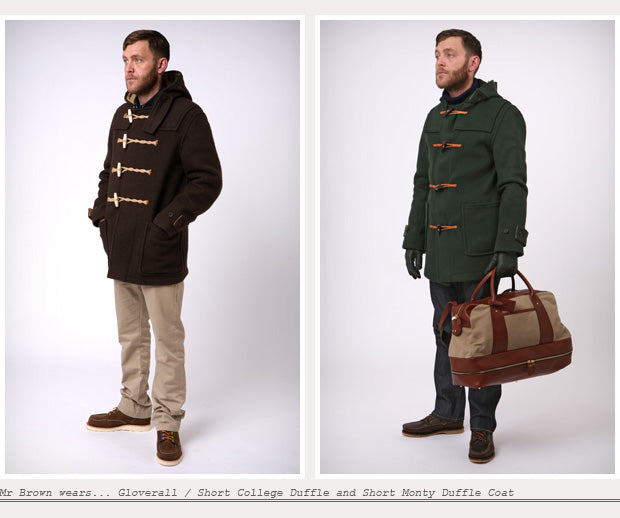
The Duffle Coat is a perfect sartorial example of form following function. The signature three quarter length design was popularised by those hardy souls from in Royal Navy during the first World War. Featuring a hood, neck strap, tartan lining and most notably ‘walrus tooth’ fastenings, it was born out of necessity. The thick, coarse wool which makes up the coat was first created in the Belgian town of Duffel, although in typically English fashion a little tweak to the spelling was in order.
While the woollen material came from Belgium, the first version of the duffle coat itself was conceived in the UK. The original design was tarted up however when the Royal Navy adopted it due to the thick, heavy wool keeping the wearer warm, even in the most harsh of climates. In addition, the distinctive toggles were designed large enough to be fastened either with frozen hands or while wearing big gloves. The hood too was adapted so that there was room for a peaked cap to be worn underneath. This also worked for sailors who had massive heads, or outlandish hairstyles they didn’t want messing up.
Following World War II, Harold and Freda Morris were approached with a request to dispose of all the military surplus stocks of the duffle coat. The couple had previously specialised in the retail of cotton, leather, gloves and overalls so with that background and the opportunity to distribute so many duffle coats, Gloverall was born.



In March 1953, a couple of years after Gloverall was formed, Jack Hawkins starred as Lieutenant Commander George Ericson in The Cruel Sea, wearing the duffle coat. The popularity of the film undoubtedly delivered the duffle coat into the consciousness of the masses and the heroic character played by Hawkins was well received with World War Two a recent memory. Men wanted to be him, and women wanted to be with him. As a result of the film, the desirability of the duffle coat soared and Gloverall had to start manufacturing the coats themselves to cope with demand. Throughout the 60s and 70s the duffle coat grew in popularity. In Europe, duffles were worn by disenfranchised students, particularly Parisian Left Bank existentialists who sported the duffle as a symbol of anti-bourgeois sentiment. It was quite the opposite across the Atlantic though, as the duffle coat became part of the Ivy cold weather look in colleges across the nation.

Despite it’s obvious popularity the duffle coat hasn’t ever become too trendy or fashionable. Equally, it has never been unfashionable either. Just how we like it.
A close cousin of the duffle coat is the double breasted pea coat, which could be fittingly described as the posh half brother to the duffle. They’ve got the same Dad but the pea coat’s Mum is a bit up herself. It’s a bit more classy, you see. The basis of our (admittedly weird) way of describing the pea coat is that it was the coat of choice for higher ranking naval officials and therefore hoodless and more formal and dare we say it, a bit posh.
The name ‘Pea Coat’ originates from the Dutch term pijjekker, with pij denoting the type of cloth and jekker meaning jacket. The pij cloth was a coarse twilled blue fabric, with a nap on one side and in English it became known as P-Cloth. As time went on, Pij became P and P then became Pea. Every day is a school day, eh?

Trivia on the origins aside, what is clear is the pea coat was certainly adopted by the various navies of Europe and the US as their coat of choice, especially for those slightly more guarded from the elements. The ‘bridge’ coat was a version of the pea coat that extended to the thighs and was uniform exclusively for Officers and Chief Petty Officers. The ‘reefer’ meanwhile, was for officers only and is identical to the basic design but with extra showy gold buttons and epaulettes, just to show everyone who was boss. That is also said to be where the phrase ‘Top Brass’ originated from. More trivia!
Gloverall continue to be at the forefront of manufacturing naval inspired outerwear such as the duffle and the pea coats, using their keen eye for history and a strong sense of purpose. Oi Polloi has been lucky enough to work on some exclusives with Gloverall including the shorter college duffle coat, which are a good way to continue your duffle coat education. Class dismissed.
